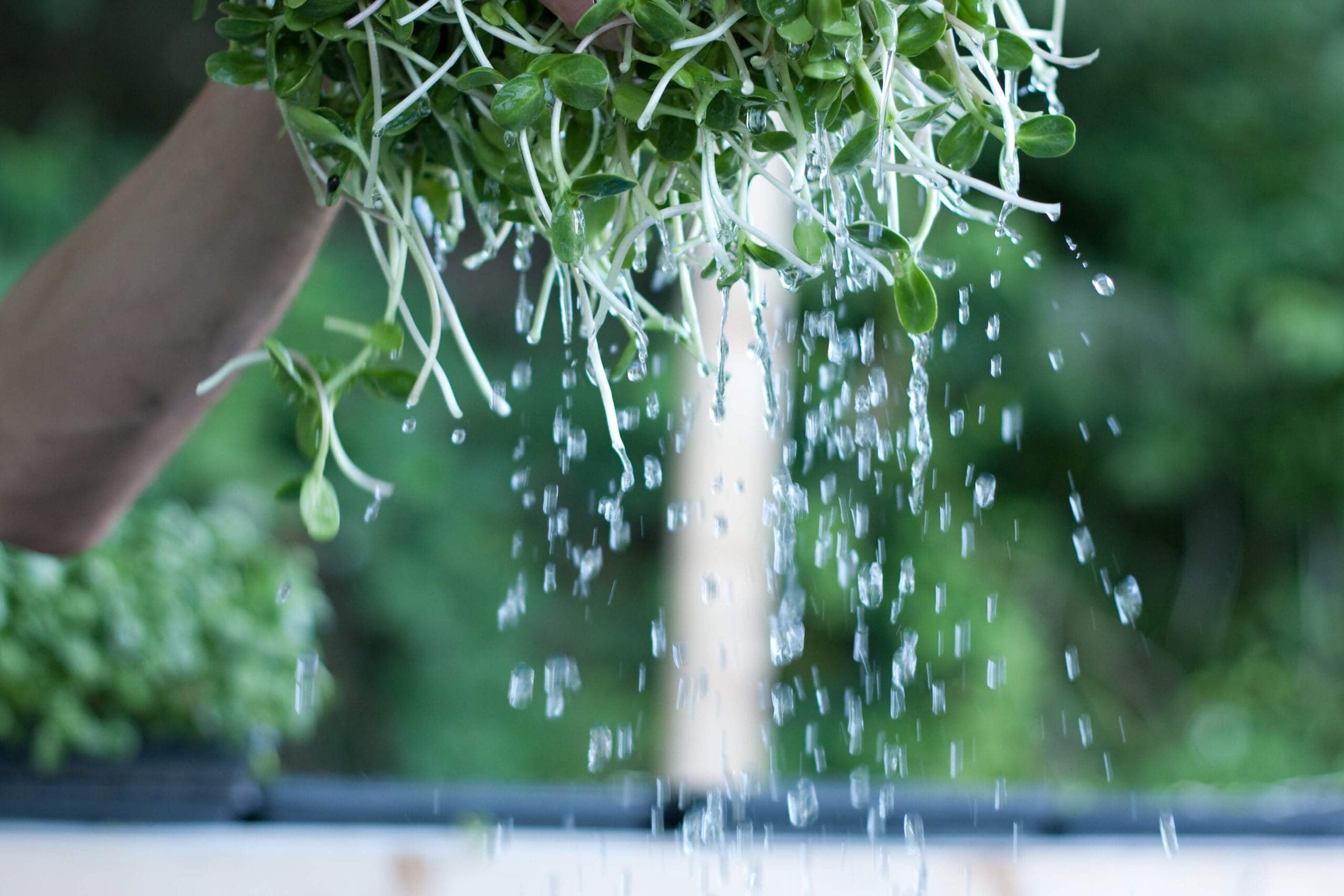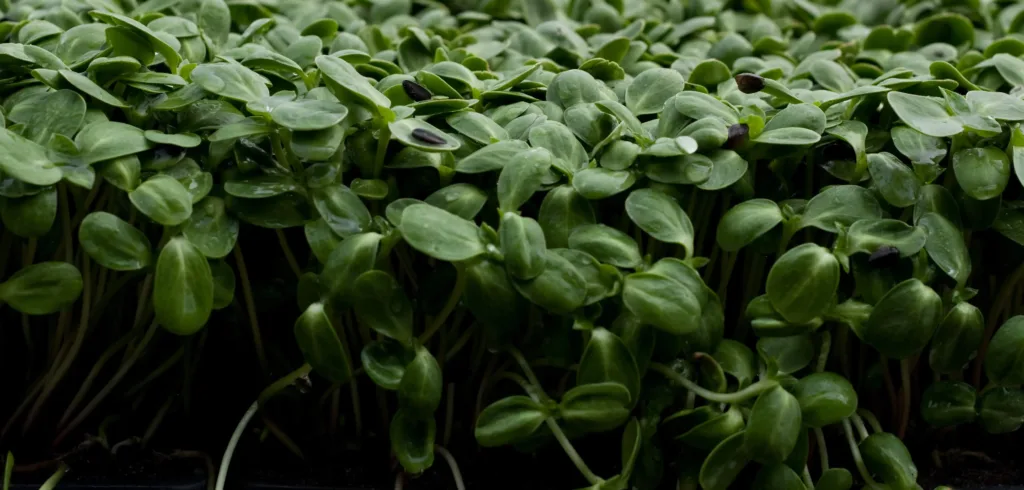
The Ultimate Cost-Free Microgreens Marketing Strategy: How to Build Your Brand and Win Customers Without Paying for Ads
Introduction
One of the biggest challenges for new (and even experienced) microgreens growers is getting their product into people’s hands. With so many options available, how do you stand out? How do you build a client base without spending thousands on advertising?
This simple Microgreens Marketing Strategy guide gives you a clear roadmap for marketing your microgreens business — without relying on paid advertising. It focuses primarily on restaurants and grocers, but is equally applicable to cafes, juice bars, and other retail buyers. The approach is rooted in consistency, relationship-building, and growing brand awareness over time.
Why This Strategy Works
Advertising can get you attention — but only while you’re paying for it. This approach is more sustainable. It’s designed to:
- Build brand awareness among your ideal customers
- Help you learn about your market and how to meet their needs
- Strengthen your online presence for lasting visibility
- Facilitate real-world sales through intentional, organic outreach
This strategy unfolds in three stages:
- Establishing your online presence
- Engaging with potential customers online
- Connecting with customers in the real world
By the time you meet a potential buyer in person, they’ll already know your brand — because you’ve shown up consistently in their online world.
STAGE 1: Establish Your Online Presence
1. Build a Website and Optimize for SEO
Your website is your home base. Use platforms like Shopify or WordPress to launch quickly with templates.
- Choose a relevant domain name (avoid default subdomains).
- Use local SEO keywords (e.g. “microgreens Vancouver”) in your page titles and content.
- Add SEO plugins like Yoast SEO or AIOSEO for WordPress.
- Include clear contact info and links to your social channels.
- Showcase high-quality photos of your crops and yourself. People buy from people.
- Tell your story: how did you get into growing, and what makes your product special?
- Start a blog: share what’s in season, highlight customers, or post growing tips.
- Set up Google Analytics and Google Search Console to track performance.
2. Set Up Google My Business
Create a free Google My Business listing. This helps your farm show up in Google Maps and local searches. Add photos, product descriptions, and keep your hours updated.
3. Start Social Media Accounts
Instagram and Facebook are essentials. TikTok, LinkedIn, and YouTube Shorts can also help depending on your market. Focus on visual storytelling:
- Growing setups
- Harvest days
- Markets and deliveries
- Recipes using your greens
- Behind-the-scenes team photos
Use relevant hashtags and geotags to attract local buyers. Engage with comments and messages consistently.
STAGE 2: Engage with Potential Customers Online
4. Follow High-Quality Local Accounts
Target your ideal buyers:
- Restaurants
- Cafes
- Juice bars
- Local grocers and co-ops
- Health and wellness influencers
Follow accounts that regularly post food content, use local food hashtags, or tag other farms. You can also follow hashtags like #localfood, #microgreens, or #farmtotable for your region.
5. Engage Genuinely (But Consistently)
Start by liking their posts. Then:
- Leave thoughtful comments (not just emojis or “looks great!”).
- Mention your product when appropriate: “That sandwich would shine with some spicy radish microgreens — happy to drop off a sample!”
- Tag them in your own posts if relevant — especially when you feature their location or reference their menu.
This helps build familiarity, so when you reach out directly, they already recognize your name.
6. Send DMs or Emails to Connect Directly
Once you’ve had some online interaction, reach out directly:
- Introduce yourself and your product.
- Mention something specific about their menu or values.
- Offer to bring by a free sample.
Keep the message short and personal. Always ask for the best time to connect — don’t assume!
7. Track Your Contacts
Create a simple spreadsheet to log every connection:
- Who you followed or messaged
- When you engaged
- What they responded to
- Sample drop-off dates and follow-ups
This keeps your outreach organized and ensures you don’t drop the ball on a lead.
STAGE 3: Meet Customers In Real Life
8. Deliver Samples to Your Leads
When it’s time to make contact, come prepared:
For Restaurants:
- Don’t show up during peak service hours (2-4 PM is ideal).
- Bring a generous amount so the chef can really test the product.
- Leave a sell sheet with: product list, pricing, delivery days, and payment terms.
For Grocers:
- Look at what they already carry.
- Ask about certifications, UPC requirements, or buyback policies.
- Clarify markup expectations so you can price accordingly.
- Be ready to discuss shelf life and packaging.
Leave your samples, be friendly, and don’t oversell. Let the product speak for itself.
9. Follow Up
Most sales don’t happen on the first visit. Keep showing up:
- Send a thank-you message after your visit.
- Follow up 7–10 days later if you haven’t heard back.
- Keep engaging with their content online.
You’re planting seeds. Some customers will take months to come around — others may buy immediately.
10. Be Patient — But Consistent
Microgreens are still a niche product in many markets. Some people don’t even realize they need them — yet.
- Some customers are actively looking for new ingredients. Focus here first.
- Some are interested, but can’t add new products right away. Stay on their radar.
- Some haven’t realized they’re potential customers. You’re educating them every time you post.
This strategy is as much about long-term positioning as it is about immediate sales.
Bonus Tip: Don’t Forget the Farmers Market
Even if your main goal is restaurants or retailers, a presence at the local farmers market gives you:
- Retail visibility
- Face-to-face feedback
- A chance to build your brand
- A testing ground for new crops or mixes
Every chef in your region should know who you are — even if they haven’t bought from you yet.
In Closing
This is a relationship-first marketing strategy. You’re building connections, one grow tray and Instagram post at a time. By consistently showing up online and in person, you create a brand that people trust — and want to support.
No paid ads required.
Looking for tools to streamline your crop planning, customer orders, and delivery schedule? Try SeedLeaf — built by microgreens growers, for microgreens growers.

Leave a Reply